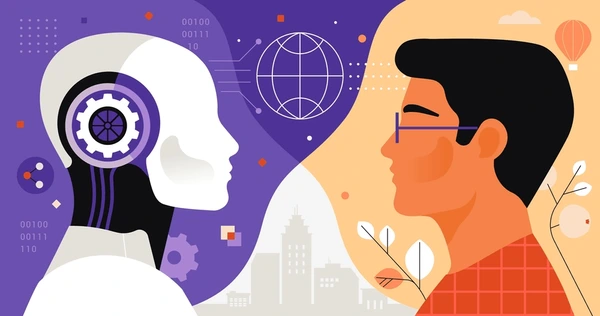AI vs. Human Involvement in Software Testing
- Home
- Case Study
- AI vs. Human Involvement in Software Testing

The software development industry has witnessed a significant transformation with the advent of Artificial Intelligence (AI). As the demand for faster, more reliable, and efficient software increases, the debate over the role of AI versus human involvement in software testing has gained momentum. This article delves into the need for AI in software testing, the challenges it addresses, and the indispensable role humans still play in this dynamic field.
The Rising Complexity of Software Testing
Software testing is a crucial phase in the development lifecycle, ensuring that the product is free from bugs, secure, and user-friendly. Traditionally, this has been a manual process, requiring testers to meticulously comb through code, simulate user interactions, and identify potential issues. However, with the rise of complex software architectures, microservices, and continuous integration/continuous delivery (CI/CD) pipelines, manual testing alone can no longer keep up with the pace.
Enter AI: AI-powered tools have emerged as a solution to these challenges, offering the ability to automate repetitive tasks, predict potential problem areas, and even suggest fixes. But does this mean that AI can replace human testers altogether? Let’s explore this further.
The Case for AI in Software Testing
- Speed and Efficiency: AI can drastically reduce the time needed for testing by automating repetitive and time-consuming tasks, such as regression testing and performance testing. This allows for faster releases and continuous testing in agile environments.
- Handling Large Data Sets: Modern applications generate vast amounts of data. AI algorithms excel at analyzing large datasets, identifying patterns, and predicting where issues are likely to occur. This capability is beyond the scope of manual testing, making AI indispensable in scenarios involving big data.
- Reducing Human Error:: Manual testing is prone to human error, especially when repetitive tasks are involved. AI reduces the risk of missed bugs or overlooked scenarios by consistently executing test cases with precision.
- Continuous Learning and Improvement: AI systems can learn from past tests, improving their accuracy and effectiveness over time. This ability to adapt and evolve makes AI a powerful tool for long-term software testing strategies.
- Cost-Effectiveness: While the initial investment in AI tools can be significant, the long-term cost savings are substantial. AI reduces the need for a large manual testing team and accelerates the testing process, leading to faster releases and lower development costs.
- Understanding User Experience: AI can simulate user interactions, but it lacks the empathy and intuition that human testers bring to the table. Testing for user experience, accessibility, and usability still requires human insight to ensure that the software meets real-world needs.
- Creative Problem-Solving: AI is excellent at following predefined rules and patterns, but it struggles with out-of-the-box thinking. Complex, unique scenarios often require human creativity to identify and address potential issues.
- Ethical and Security Considerations: While AI can help identify security vulnerabilities, it may not fully understand the ethical implications of certain features or design choices. Human oversight is essential to ensure that the software aligns with ethical standards and does not inadvertently harm users.
- Contextual Understanding: AI lacks the ability to understand the broader context in which software operates. It may not fully grasp the business goals, user demographics, or industry-specific regulations that can influence testing priorities.
Both AI systems and human testers should engage in continuous learning. AI can evolve through machine learning, while human testers can enhance their skills and adapt to new testing methodologies.
Conclusion
The future of software testing lies in the balance between AI and human involvement. While AI offers unprecedented speed, efficiency, and precision, human testers remain essential for their creativity, empathy, and contextual understanding. By embracing a hybrid approach, organizations can leverage the best of both worlds, ensuring that their software is not only technically sound but also user-friendly and aligned with ethical standards.
As AI continues to evolve, the role of human testers will undoubtedly shift, but it will never be entirely replaced. Instead, AI and humans will work together, complementing each other's strengths and addressing each other's limitations. In this partnership lies the key to building robust, innovative, and user-centric software in the years to come.
